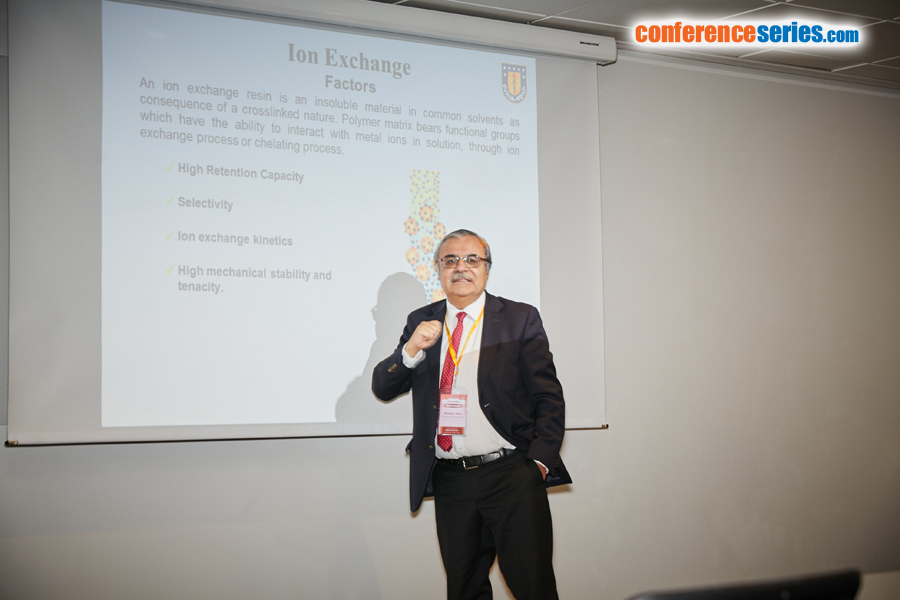
Bernabe L. Rivas
University of Concepcion, Chile
Title: Functional polymers to remove inorganic contaminants
Biography
Biography: Bernabe L. Rivas
Abstract
The major percentage of inorganic compounds found in groundwater is coming from natural origins. However, significant amounts are also a result of the human activities. Thus, the removal/remediation of these substances is necessary. Over the last few years, discarding solid and/or liquid waste products containing heavy metals emanating from industrial processes has received much attention.
Membrane filtration easily allows this separation by means of the method known as the liquid-phase polymer-based retention (LPR) technique. Applications of water-soluble polymers to the homogeneous enrichment or selective separation of various metal ions from dilute solutions have been reported[1]. Through to washing or enrichment methods, Cr(VI), V(V), Mo(VI), and As(V) removal experiments were carried out at different pH using water-soluble cationic polymers (WSCPs) containing quaternary ammonium salts. The results showed highest retention capacity of oxyanions depending on the pH.
Polymer-clay nanocomposites researches have presented a great attention from scientific community because nanocomposites materials present enhanced properties (mechanical, thermal, and barrier properties) compared with starting material (unloaded polymers). Diverse clay materials have been used as filler in nanocomposites; montmorillonite, kaolinite, vermiculite, among others. The use of polymer matrix with organic functional with capability to retain ion and filler such as clays lead to nanocomposite ion exchange resins. We have studied polymer nanocomposite loaded with layered double hydroxide (LDH) as sorbents for oxyanions such as arsenate, chromate, and vanadate. Under different experimental conditions, the composite exhibited a high oxy anion sorption.





